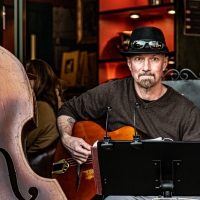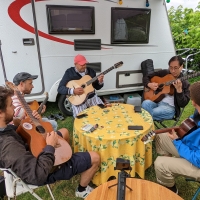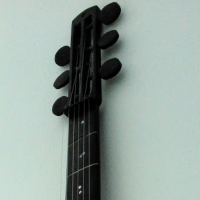DjangoBooks.com
Welcome to our Community!
Categories
- 20K All Categories
- 1.1K General
- 475 Welcome
- 59 Archtop Eddy's Corner
- 146 CD, DVD, and Concert Reviews
- 383 FAQ
- 26 Gypsy Jazz Italia
- 24 Photos
- 202 Gypsy Picking
- 21 Unaccompanied Django
- 15 Pearl Django Play-Along Vol.1
- 17 Gypsy Fire
- 45 Gypsy Rhythm
- 1.4K Gypsy Jazz University - Get Educated
- 130 Gypsy Jazz 101
- 223 Repertoire
- 218 History
- 707 Technique
- 51 Licks and Patterns
- 6 Daniel Givone Manouche Guitare Method Users Group
- 20 Eddie Lang Club
- 1.3K Gypsy Jazz Gear
- 799 Guitars, Strings, Picks, Amps, Pickups and Other Accessories
- 457 Classifieds
- 49 Recording
- 62 Other Instruments
- 18 Violin
- 5 Mandolin
- 22 Accordion
- 7 Bass
- 10 Woodwinds
- 345 Gypsy Jazz Events
- 141 North America
- 109 Europe
- 95 International
In this Discussion
Who's Online (0)
Spruce vs Cedar tops
 MikeK
Asheville, NCNew Altamira M-30 D-Cedar, Gitane DG-320 John Jorgensen
MikeK
Asheville, NCNew Altamira M-30 D-Cedar, Gitane DG-320 John Jorgensen
As some of you know, I recently sold my Altamira M-30 to brother Lux here. Because I want a back-up to my trusty M-10 (my workhorse guitar) that's somewhat different from it, I bought an M-30 D with a cedar top from a gent up in Maine. Anyway, it arrived the other day and I love it. It's the 5th Altamira I've owned & like the others, the M-30 D is punchy, loud, dry & easy to play for hours on end. That's the big 4 when I'm checking out a new GJ guitar. Without getting into the technical stuff about wood properties, etc (which are interesting to me on some level, but expansive volumes have been posted here about all that in the past), does anyone besides me not notice a difference in how they sound? I'm curious because if I were blindfolded, I don't think I would ever be able to guess the difference between my spruce top M-30 oval hole & my newly acquired cedar top M-30 D-hole. I'm glad I got it, because it's fun to have an oval hole & a D-hole to choose from. But I really don't hear a difference in the way they sound & I'm curious what others think.












Comments
Pretty much the same for me. I have a Mateos Jazz B (spruce) and a Mateos Audrey (cedar) and they sound pretty similar. I've played them enough to be able to tell the difference, and they do sound slightly different, but it's not like there's a night and day difference between them. I'm not convinced the tonal difference between spruce and cedar is all that audible on GJ guitars, at least with my ears. Some people really enjoy that aspect of the hobby and can probably tell the difference.
My layman's understanding is that cedar on day 1 = spruce after many, many hours of playing. When I was ordering my guitar Risto asked me about the top preference. When I asked him to tell me more, that's what he replied in a nutshell; if you want the guitar to sound open on day 1 then get cedar, if you want to hear it break in and develop then get spruce.
Sometimes I guess right with Classical Guitars...some times not.
There are enough variables in a guitar's construction that isolating one as responsible for its voice is really, really hard. I have guitars with spruce, cedar, and redwood tops over rosewood, walnut, mahogany, and purpleheart, and even after years of playing them, and others with similar mix-and-match material combinations, I hesitate to assign their voices to just the woods used. Though I do have a soft spot for redwood thanks to owning three redwood-topped guitars--which also have very significant body designs and thus very different voices.
Like @Buco said, cedar always sounds so much more resonant than spruce when new. When people come here and try identical models with spruce and cedar tops, they always, always take the cedar home. It’s just too irresistible as it makes the spruce top sound timid and weak by comparison. Of course, if you have the discipline to hold out for delayed gratification, the spruce top will eventually equal the cedar top in these respects but can take years. Of course, the overtone characteristics are also quite different, with spruce having more complexity and warmth whereas cedar tends to be simpler and brighter.
I've only built one Cedar guitar, a classical, and it's been out of my hands for years so I have no idea about it. I'm probably not going to make anymore anytime soon, mostly because I have a ton of Spruce and I like what I'm doing with it. When you introduce a big variable it kind of sets you back a ways in understanding how to control things.
One of my favorites from The Gear Page and I paraphrase: "Mahogany is like Perry Como, Rosewood...Sinatra."
"to paraphrase, maybe 'Spruce wears in, Cedar wears out'?"
Not in the case of my 1975 Marin Montero classical. My Dunn Daphne is only a 2001 build, but it shows no sign of diminished voice--and it has been played a lot.
Yes, I never heard about cedar getting weaker. Just that, for whatever reason, it doesn't require a break in time. But, and it shows how little I knew, in my mind cedar would be warmer than spruce, everything else being equal.
Where's Paul...for classicals, cedar top has stereotypically always been considered "warmer." I mean you always hear, generally Romantic stuff/Cedar, Baroque/ Counterpoint stuff/Spruce. I mean it's totally on a guitar by guitar basis though and who's playing it.